Guide To AI Data Analytics in 2024
Reading Time: 10 minutes
Data analytics stands at the forefront of business strategy and operational efficiency, acting as the linchpin for decision-making processes in the modern corporate environment. In the digital-dominated era, the sheer volume of data available to businesses can be overwhelming, encompassing diverse metrics such as consumer behavior, market trends, and operational performance. The complexity of integrating and analyzing data from myriad sources poses a significant challenge, making it increasingly difficult for companies to synthesize this information into actionable insights. Traditional analytical methods often fall short in coping with the scale and complexity of today’s data landscapes, leading to inefficiencies and missed opportunities.
Enter the transformative power of Artificial Intelligence (AI). The meteoric rise of AI technology has revolutionized the field of data analytics, offering unprecedented capabilities for data processing, pattern recognition, and predictive analytics. Let’s understand how AI is helping with data analytics and also explore the top AI data analytics tools that you can check out.
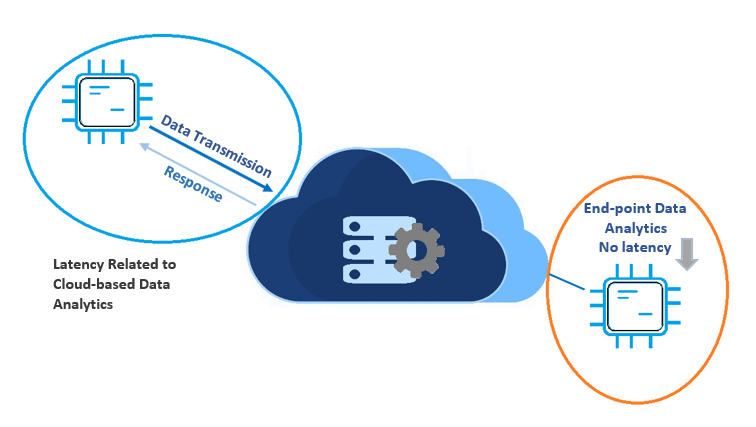
What is AI Data Analytics?
AI Data Analytics refers to the advanced approach of utilizing Artificial Intelligence (AI) and Machine Learning (ML) algorithms to process and analyze vast quantities of data. This method transcends traditional data analysis techniques by leveraging the power of AI to automate the extraction of insights, identification of patterns, and prediction of future trends based on historical data. Unlike conventional analytics, which relies heavily on manual interpretation and straightforward statistical tools, AI Data Analytics employs sophisticated models that can learn and improve over time, handling complex data structures and uncovering hidden correlations that might not be evident to human analysts.
The process involves several key components:
- Data Preprocessing: Before analysis, data must be cleaned and organized. AI algorithms can automate this task, handling missing values, outliers, and inconsistencies to ensure the data is accurate and ready for analysis.
- Machine Learning Models: At the heart of AI Data Analytics are ML models that are trained on historical data. These models are designed to detect patterns and relationships between different data elements, learning from each interaction to improve their predictive accuracy over time.
- Predictive Analytics: One of the hallmark features of AI Data Analytics is its ability to forecast future outcomes. By analyzing historical data, AI can make informed predictions about future trends, customer behaviors, market movements, and potential risks, offering businesses a strategic advantage.
- Natural Language Processing (NLP): AI Data Analytics often incorporates NLP to analyze text data, such as customer reviews or social media posts, providing deeper insights into consumer sentiments and preferences.
- Data Visualization: AI tools can also generate intuitive visual representations of data, making it easier for analysts to interpret complex datasets and communicate their findings to stakeholders.
The integration of AI into data analytics has wide-ranging applications across various industries. In healthcare, for instance, it can predict disease outbreaks or patient outcomes. In finance, it can detect fraudulent activities or forecast market trends. Retail companies use AI Data Analytics to understand customer behavior and personalize marketing strategies.
Top 10 AI Data Analytics Tools
Tableau
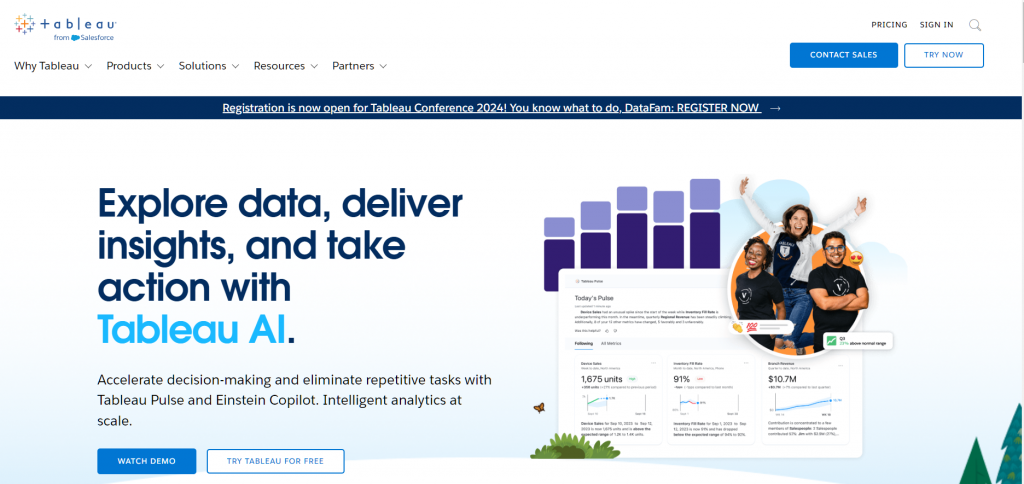
Tableau is a prominent AI Data Analytics tool that has revolutionized the way businesses understand and utilize their data. With its commitment to making data analysis accessible to a broad audience, Tableau has integrated advanced AI capabilities across its platform, ensuring that users can leverage predictive analytics and machine learning to drive insightful decision-making. One of the standout features of Tableau is Einstein Copilot, which acts as an intelligent assistant to automate data analysis, prep, and governance, significantly accelerating the time to insight. This tool is designed to enhance productivity for data analysts by providing in-context help and automating repetitive tasks, thus improving the quality of visualizations and dashboards through prescriptive guidance.
Einstein Copilot employs generative AI and statistical analysis to understand the context of your data, suggest relevant business questions, and kickstart your analysis. It can fill data gaps, enhance analysis by creating synthetic datasets where real data is limited, and predict outcomes with predictive analytics. This approach promises an efficient, insightful, and ethical methodology to data analytics, emphasizing privacy and security. With Einstein Copilot, Tableau aims to democratize data analysis further, making powerful data insights accessible to everyone within an organization, not just those with technical expertise.
Salespanel
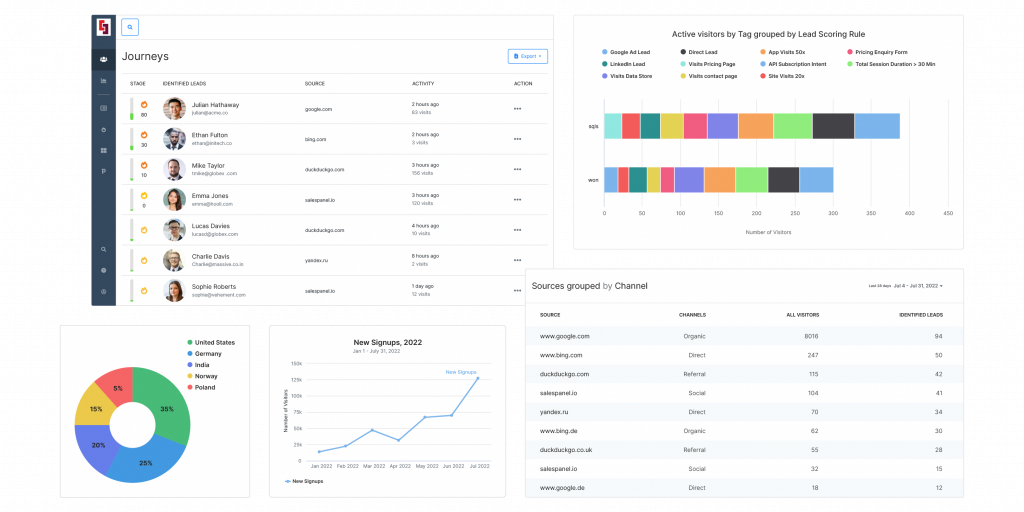
Salespanel is a marketing data analytics tool specifically designed for B2B businesses. It specializes in enhancing decision-making, deepening customer insights, and refining marketing strategies through visitor intelligence and data-driven analysis. The platform excels in identifying, tracking, and qualifying leads, integrating data from a multitude of sources such as websites, applications, forms, and CRMs to provide a comprehensive overview for sales and marketing teams.
The product’s approach to marketing analytics is crucial for B2B organizations, aiding in the evaluation of campaign ROI, strategy optimization, and the enrichment of customer experiences. Its capabilities in lead generation and qualification, real-time tracking, and marketing automation stand out, ensuring that sales and marketing efforts are closely aligned and efficiently executed.
Salespanel positions itself as an indispensable tool for B2B companies aiming to leverage the power of data analytics. Its focus on real-time insights, comprehensive data integration, and predictive analytics equips businesses with the necessary tools to make informed decisions, optimize marketing efforts, and achieve superior ROI on marketing investments.
DataRobot
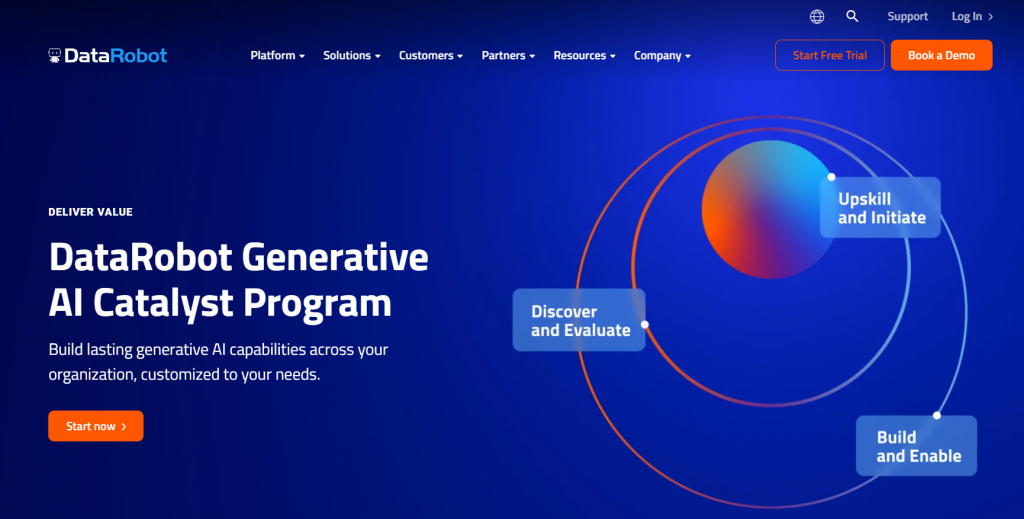
DataRobot stands out as a leading AI Data Analytics tool designed to deliver value across the entire AI and machine learning lifecycle. It offers a unified platform that combines generative and predictive AI to help businesses operate confidently, govern with full visibility, and build with agility. The platform is praised for its ability to accelerate AI deployment, significantly increase return on investment, and lower costs.
The DataRobot AI Platform is built to support a broad range of industries, including manufacturing, retail, and financial services, making it versatile for various business applications. It caters to the needs of cross-functional teams and users, integrating diverse data sources and providing the flexibility to deploy AI solutions anywhere. This ensures that AI-driven decisions are seamlessly connected with existing business applications and services, like Snowflake, Salesforce, and ServiceNow.
The platform’s key features highlight its commitment to democratizing access to the power of AI. It offers a single environment tailored to different user skills and capabilities, allowing data scientists, analytics experts, business users, and IT professionals to collaborate effectively. DataRobot handles any type of data from any source, unifying data across disparate data sources and formats to provide a holistic view that drives business.
DataRobot’s AI Platform is distinguished by its comprehensive approach to AI analytics, offering a modular, flexible, and extensible framework that empowers organizations to innovate rapidly and adapt as their needs evolve.
Microsoft Power BI
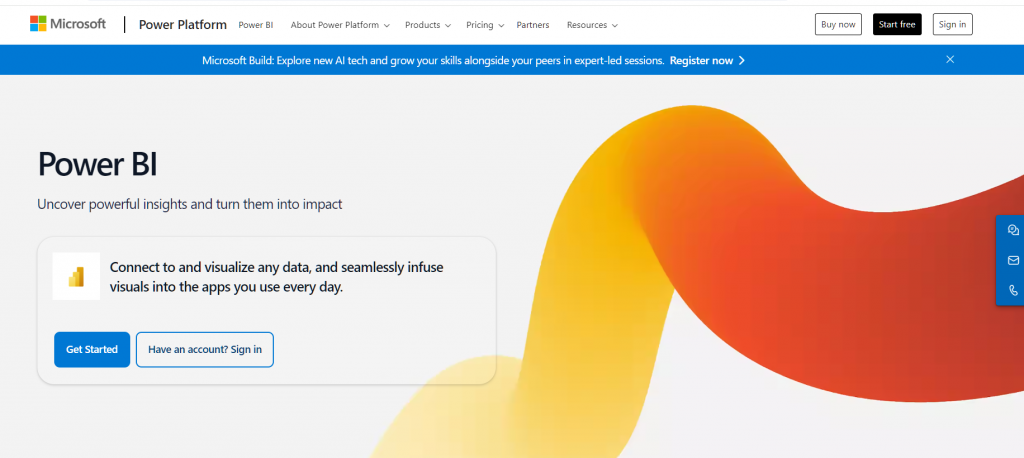
Microsoft Power BI is an AI data analytics tool that enhances data analysis and visualization through advanced AI capabilities. It enables users to connect to a variety of data sources, model and visualize data and share insights across their organization with ease. Power BI offers features like AI insights, which provide access to pre-trained machine learning models for tasks such as sentiment analysis, keyphrase extraction, language detection, and image tagging within the Power Query Editor.
Power BI has integrated Azure Machine Learning models developed by data scientists, making these models easily accessible to business analysts. This integration fosters collaboration between data scientists and business analysts by simplifying the invocation of complex machine learning models through a point-and-click interface. Recent updates have introduced generative AI capabilities, including the use of GPT-3 for converting natural language into DAX, enhancing the tool’s ability to interpret user queries and generate useful data insights.
Moreover, Power BI facilitates self-service BI, enabling users to create and publish reports to share with their coworkers. This promotes a culture of data-driven decision-making within organizations. Users can start with a free account or choose from various licensing options, including Power BI Pro, to meet their specific needs. Power BI Desktop, a free application, further supports data connection, modeling, and report creation.
Polymer Search
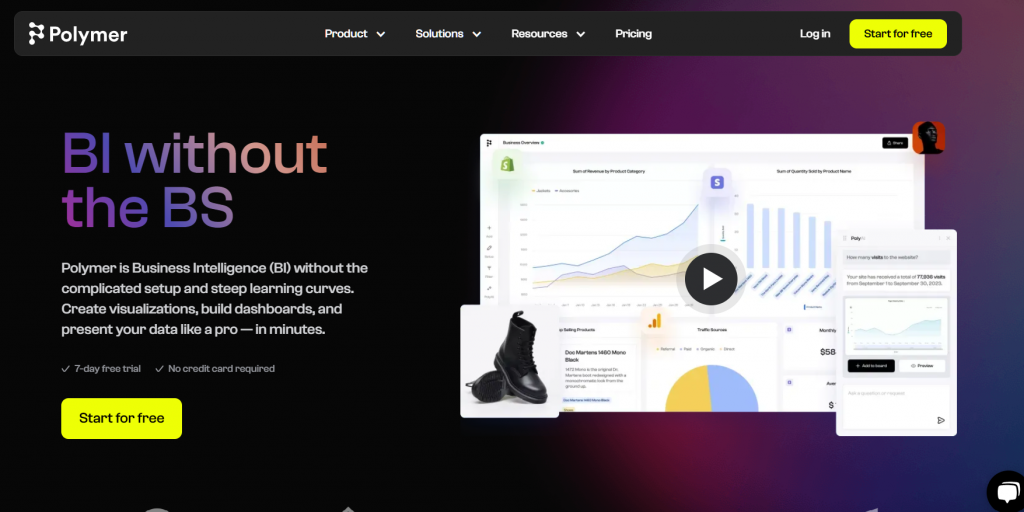
Polymer Search stands out as an intuitive Business Intelligence (BI) tool designed for ease of use, enabling the creation of stunning data visualizations, comprehensive dashboards, and the embedding of data into presentations without any coding required. It’s highlighted for its user-friendly approach, allowing for quick data import from various sources like Google Sheets, Excel, and Facebook Ads, among others. The platform’s AI capabilities facilitate data analysis, offering rich insights and automatically building beautiful dashboards. Polymer is versatile, supporting analysis needs across different teams within an organization, from marketing to sales and operations, promoting a data-driven culture within enterprises. Its affordability and no-code nature make it an accessible tool for users at all levels of technical expertise.
Akkio
Akkio is a user-friendly AI data analytics tool designed for broad organizational use, from data analysts to marketing and operations teams. It simplifies data preparation, prediction, and forecasting, enhancing efficiency for users and their clients. With key features like Chat Explore™, forecasting, generative reports, and Chat Data Prep™, Akkio aims to streamline the analytics process, making predictive analytics more accessible.
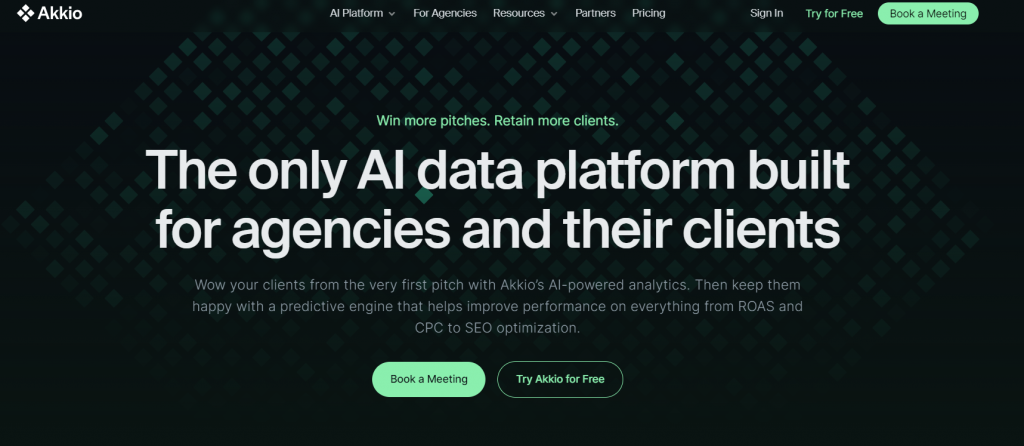
The platform excels in data processing, pattern recognition, predictive analytics, and automation, helping businesses uncover insights and make informed decisions quickly. Akkio is especially beneficial across industries like retail, healthcare, finance, and manufacturing for tasks such as demand forecasting, diagnostics improvement, fraud detection, and predictive maintenance.
Akkio’s no-code approach to machine learning (ML) democratizes AI analytics, making advanced data analysis accessible to non-technical users. Features like Chat Data Prep and extensive integrations simplify data handling, enabling easy construction of predictive models and actionable insights. This collaborative approach between AI tools and human analysts aims to drive better business decisions.
Qlik
Qlik Sense stands out in the realm of modern analytics by empowering users across all skill levels with AI-powered insights and predictions, thus enabling intelligent actions based on data analysis. Its unique associative analytics engine allows for unparalleled data exploration and insight discovery beyond the capabilities of traditional query-based analytics and dashboards. This engine enables instant calculations and data associations, allowing users to freely navigate through their data in any direction to uncover insights.
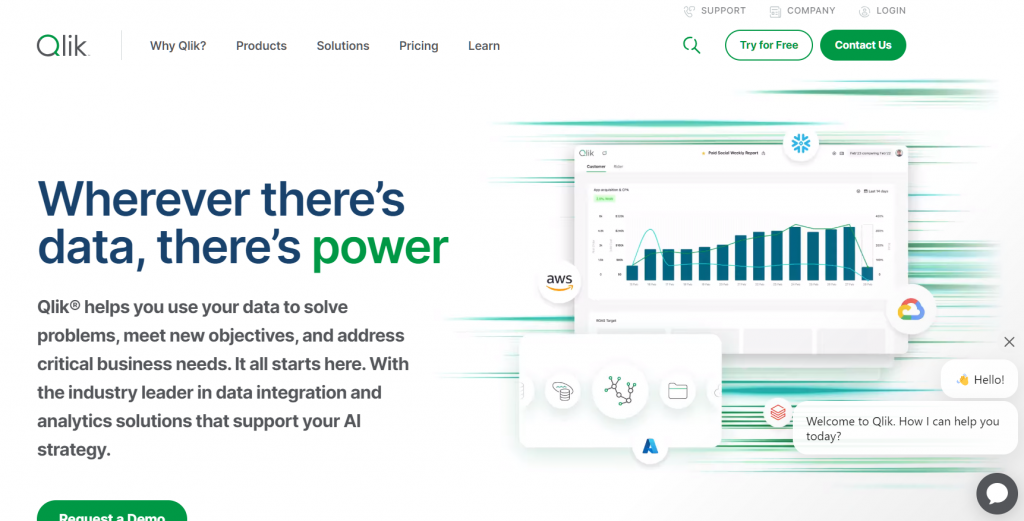
Qlik Sense is known for its augmented analytics capabilities, integrating AI and machine learning (ML) into its foundation to provide a comprehensive range of augmented analytics features. These features are designed to be accessible to users regardless of their technical expertise, facilitating automated insight generation, natural language interaction, AI-assisted creation and data prep, as well as AutoML & predictive analytics. Such capabilities not only democratize data analysis but also significantly enhance the potential for generating actionable insights.
Moreover, Qlik Sense prioritizes taking intelligent action in the moment, combining real-time data pipelines with action-oriented capabilities. This approach enables organizations to respond rapidly to business events with intelligent alerts and automation, embedded analytics, and mobile capabilities, ensuring that decision-making is informed by the most current data available.
Looker
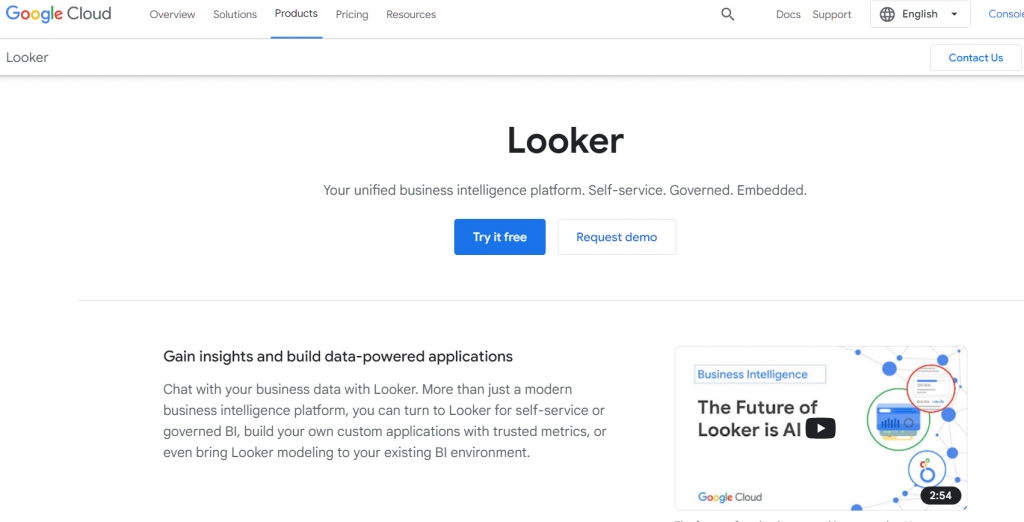
A core component of Google Cloud’s analytics suite, Looker revolutionizes the way businesses harness their data. It leverages LookML for semantic modeling, ensuring data governance and consistency across an organization. Looker’s real-time data access facilitates dynamic decision-making, while its user-friendly interface encourages a collaborative analytics environment. This platform aims to democratize data insights, allowing users of varying technical skills to generate reports and analytics. It efficiently addresses issues like data silos, ensuring that data remains centralized, accessible, and actionable. This makes Looker an ideal choice for industries looking to leverage analytics in digital marketing, sales, operations, customer insights, and financial planning.
Sisense
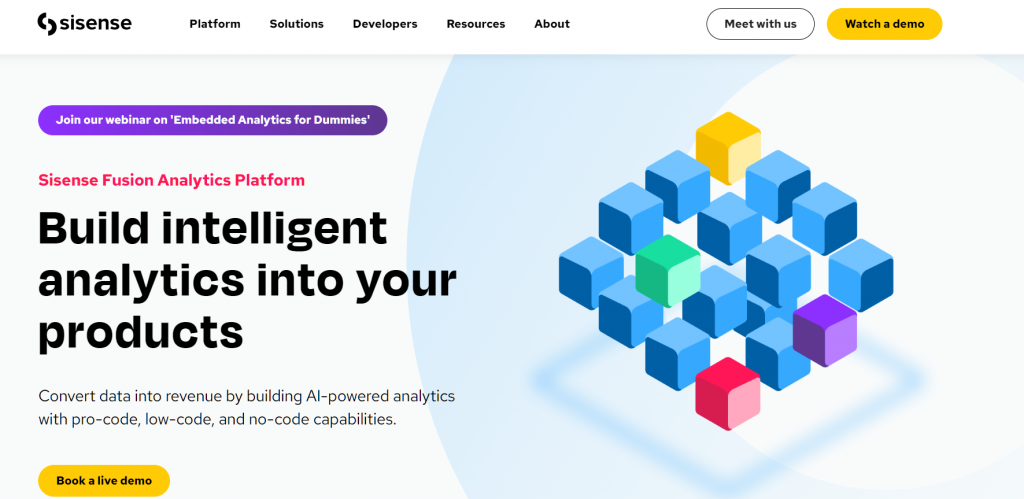
Distinguished by its end-to-end BI solution, Sisense empowers organizations to simplify complex datasets, converting them into actionable insights. It is known for its robust integration capabilities, connecting seamlessly with diverse data sources to create comprehensive, interactive dashboards and reports. This platform is designed to make data analytics accessible across an organization, fostering a culture of informed decision-making. Sisense’s approach to BI analytics is particularly beneficial for organizations that deal with multifaceted data environments, requiring a flexible and powerful tool to visualize and interpret data.
Databricks
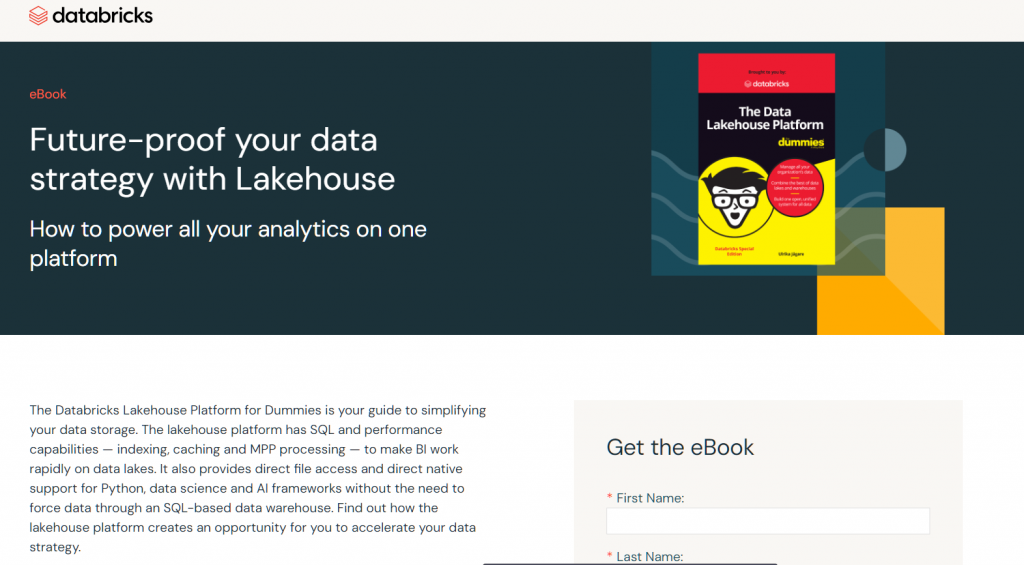
Databricks stands out in the world of big data and analytics as a cutting-edge platform, designed to unify the analytics process across complex data science projects. This platform is particularly noted for its ability to blend the functionalities of data warehouses and data lakes, creating an environment that is highly optimized for both machine learning and AI projects. Its core strength lies in its robust capacity for handling large-scale data processing and analysis tasks, making it an indispensable tool for organizations that aim to harness the power of big data to gain a strategic edge in their respective fields.
The collaborative nature of Databricks is one of its key features, facilitating seamless teamwork across data scientists, engineers, and analysts. This collaborative environment ensures that diverse teams can work together efficiently, breaking down silos that typically impede data science projects. By offering a unified workspace, Databricks enables these teams to access, analyze, and process data in real-time, driving innovation and expediting the discovery of insights.
Final Thoughts
In today’s avalanche of data, the challenge isn’t just collecting it, but making it work for us. That’s where Artificial Intelligence (AI) steps in, transforming data analytics from a daunting task into a strategic asset. AI is revolutionizing how we handle the volume, complexity, and scale of data, making it not only manageable but actionable.
AI does more than just streamline data analysis; it’s a game-changer in uncovering patterns, diving deep into insights, and, more importantly, predicting future trends. This predictive prowess is invaluable, giving businesses the foresight to make informed decisions and stay ahead in the game.
Tools like Tableau, Salespanel, DataRobot, and Microsoft Power BI, among others, are at the forefront of this revolution. They’re not just tools but catalysts for democratizing data analytics, making sophisticated analyses accessible across organizational levels. Whether it’s enhancing decision-making, refining marketing strategies, or forecasting market trends, these AI-powered tools are reshaping the landscape of data analytics.
To navigate the sea of data today, AI analytics is not just a helpful tool—it’s essential. It promises a future where data not only informs but guides strategic foresight, empowering businesses to anticipate changes and adapt with confidence.
Sell more, understand your customers’ journey for free!
Sales and Marketing teams spend millions of dollars to bring visitors to your website. But do you track your customer’s journey? Do you know who buys and why?
Around 8% of your website traffic will sign up on your lead forms. What happens to the other 92% of your traffic? Can you identify your visiting accounts? Can you engage and retarget your qualified visitors even if they are not identified?
